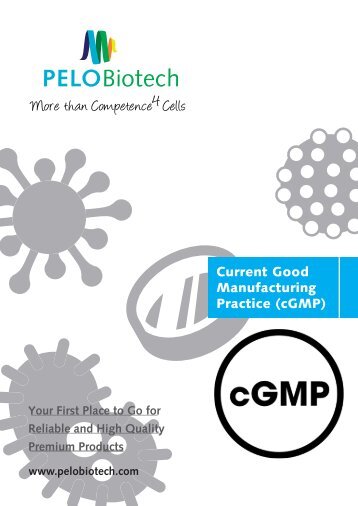PeloNews Feb/March2019
- Text
- Synbbb
- Analysis
- Interactions
- Detection
- Tissue
- Tumor
- Pelonews
- Chimerism
- Models
- Genomic
PELONews SynBBB exhibits
PELONews SynBBB exhibits significant tight junction formation and shows excellent correlation with in vivo permeability Other validated tissue models
Chimerism analysis: Non-T & Non-B Genomic Detection Kits · Q: Is my current sorting method compatible with these kits? A: Yes! The Non-T Genomic and Non-B Genomic Detection Kits determine cell purity at the nucleic acid level. It is therefore insensitive to the method used to sort the cells. Q: Do I need to introduce a new technique and procedures in the lab to use these kits? A:These kits are designed to be used along the traditional chimerism analysis workflow. All there is to do is add the DNA sample to the reaction tube. Then the reaction can be run at the same time than the chimerism PCR, because the reaction parameters are the same. The PCR products are analyzed on a sequencer in the same way than the chimerism sample. Chimerism labs already have all the expertise and equipment to run the Non-T Genomic and Non-B Genomic Detection Kits. Q: I don't have a lot of DNA sample to start with, I need it all for the chimerism analysis and cannot waste any. Will I have enough sample to check for purity? A:The Non-T Genomic and Non-B Genomic Detection Kits can be run with as little as 0.5 ng of genomic DNA. This corresponds to the amount of DNA present in approximately 200 cells. The lowest DNA concentration that can be detected with classical UV methods is about 2 ng/µL. So even with samples with very low, non detectable DNA content, 1 µL of sample is usually sufficient to run the Genomic Detection Kit. Learn more here Q: I validated my cell sorting method and had good purities. Why would I need to check the purity of the sorted cells every time? A:The quality of the cell sorting is very sample-dependant. The first source of viability is of course the patient. Shortly after hematopoietic stem cell transplant, it is common for patients to have a very low blood cell count, as well as a very low T cell count (often less than 5% of total leukocytes, whereas normal levels are 25-30%). The risk of T Cells isolated from these samples to be contaminated by monocytes or granulocytes is very high. In addition, blood samples sometimes reach the lab several days after collection, and can be exposed to extreme temperatures during transportation. These parameters can vary between samples, are out of the lab's control, and can have a very negative impact on cell sorting quality. Assessing the purity of each isolated cell subset is an essential quality control step, and is required for ASHI or EFI accreditation. Learn more Q: Isn't flow cytometry a more accurate method of assessing purity? A: Actually, flow cytometry is not as accurate as one might think, because measured purity can vary considerably depending on the way the data is analyzed. On most samples, changing the way the cells are gated can lead to purities readings anywhere between 80% and 100%. In contrast, calculating purity is straightforward with the Non-T Genomic and Non-B Genomic Detection Kits, and there is no interpretation or ambiguities during the analysis. In addition, chimerism tests are based on DNA analysis, and so are the Non-T Genomic and Non-B Genomic Detection Kits. All the DNA present in the sample will be taken into account. In contrast, flow cytometry analysis excludes "debris" and events that have a small size. These may contain DNA fragments or even entire nuclei. This DNA, excluded from the flow cytometry data, might have an impact on the chimerism analysis results.
- Page 1 and 2: PELONEWS WITH FOCUS ON 3D INNVOATIO
- Page 3 and 4: Advanced in-vitro Models for Tumor
- Page 5: New Products SynVivo 3D Tissue/Orga
Inappropriate
Loading...
Mail this publication
Loading...
Embed
Loading...
About us
This website is published by
PELOBIOTECH Gmbh
Am Klopferspitz 19
82152 Planegg/Martinsried
(Phone): +49 89 517 286 59-0
(Fax): +49 89 517 286 59-88
E-Mail: info@pelobiotech.com
Managing directors:
Dr. Lothar Steeb
Dr. Peter Frost
Registergericht/Trade register:
Amtsgericht München HRB 197203
UID-Nr: DE282095341
EORI-Nr.: DE513247033551940
Responsible for the content (V.i.s.d.M.):
Dr. Peter Frost
Linked Sites: Although we thoroughly check all sites linked to our webpage, we decline any responsibility for their contents.






































Follow Us
Instagram
Email
LinkedIn
Twitter